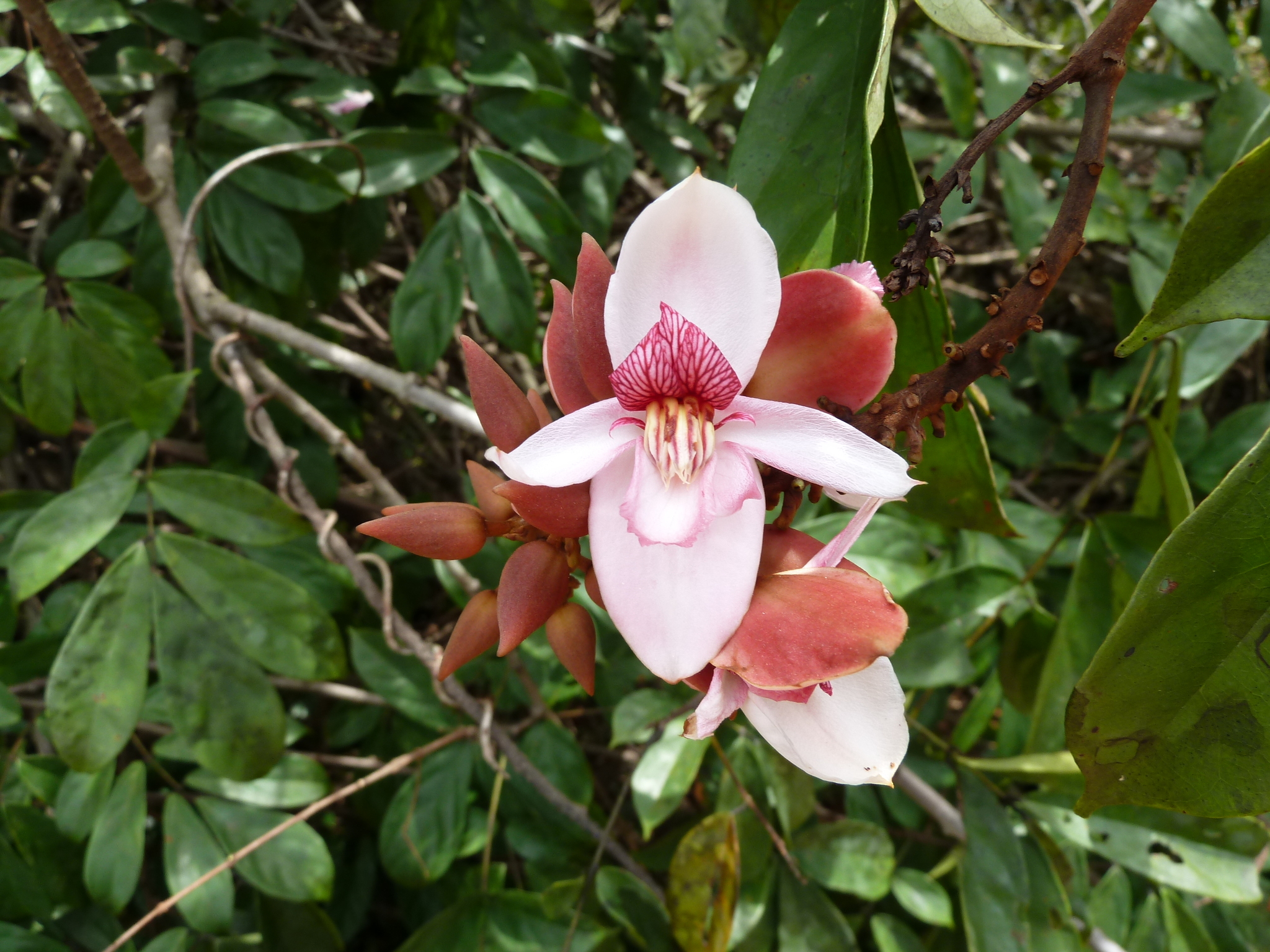Introduction
Subfamily Duparquetioideae includes the single species Duparquetia orchidacea. This unusual West African species forms a distinct lineage in all phylogenetic analyses with no obvious closest relatives. Recent phylogenetic analyses resolve subfamily Duparquetioideae as sister to the clade formed by Papilioinoideae, Caesalpinioideae and Dialiodeae.
Key Features
Morphologically subfamily Duparquetioideae is unique in the family. Duparquetia is a liana with imparipinnate leaves, a racemose inflorescence, zygomorphic flowers, and a woody, elastically dehiscent pod. In Duparquetia flowers the vexillary petal is exterior in bud, a characteristic which generally is found only in subfamily Papilionoideae. The morphology, ultrastructure and development of Duparquetia pollen are also unusual, not only in the Leguminosae, but among the eudicots. Finally, the species lacks vestured pits in the wood vessels, a feature that is present in most Leguminosae except Cercidoideae and most Dialioideae.
Distribution and Ecology
Duparquetia orchidacea is endemic to tropical humid forests of Central and West Africa.
Formal Botanical Description
As published in LPWG (2017), Taxon 66: 44-77, doi.org/10.12705/661.3
Subfam. Duparquetioideae Legume Phylogeny Working Group, stat. nov. ≡ Duparquetiinae H.S.Irwin & Barneby in Polhill & Raven, Adv. Legume Syst. 1: 102. 1981.
Type: Duparquetia Baill.
Unarmed, scrambling liana, often climbing to the forest canopy; specialised extrafloral nectaries lacking on petiole and leaf rachis. Stipules in lateral position, free, narrowly triangular. Leaves imparipinnate, pulvinate, leaflets opposite, exstipellate. Inflorescence a terminal, erect, 10–30-flowered raceme; bracteoles 2, small. Flowers bisexual, strongly bilaterally symmetrical, hypanthium lacking; sepals 4, unequal, the abaxial and adaxial sepals cucullate, sepaloid, the lateral sepals petaloid; petals 5, free, dimorphic, the adaxial and the two lateral petals ovate, two abaxial petals strap-like, oblong, all 5 petals with stalked gland-like extrusions along their margins, imbricate, the adaxial petal outermost; stamens 4, the anthers basifixed, oblong, with pointed appendages, the thecae dehisce by a short, apical, poricidal slit, the anthers postgenitally fused into a curving synandrium, the appendages remain free; pollen in monads, asymmetrical, one equatorial-encircling ectoaperture with two equatorial endoapertures; gynoecium 1-carpellate, stipitate, 2–5-ovuled, with four ridges running along the length of the ovary. Fruit an oblong four-angled, woody pod, dehiscent, valves spirally coiled. Seeds 2–5 per fruit, oblong to ovoid, the testa thick; embryo straight. Vestured pits lacking in secondary xylem; silica bodies, septate fibres and storeyed rays absent. Root nodules absent. Chromosome number unknown.
To learn more
Prenner, G. and Klitgaard, B.B. (2008). Towards unlocking the deep nodes of Leguminosae: Floral development and morphology of the enigmatic Duparquetia orchidacea (Leguminosae, Caesalpinioideae). American Journal of Botany 95: 1349-1365. https://doi.org/10.3732/ajb.0800199
List of genera
Below is an alphabetical list of all genera accepted by the LPWG with links out to the taxonomic pages on our portal, GBIF and World Checklist of Vascular Plants (Kew). Over time this list will be updated to reflect the evolving taxonomy.
Please see the Species List and Synonyms and Legume Taxonomy Working Group pages for more taxonomic information. The current taxonomy is accessible by Browse or Advanced Search.
| Genus | Data Source | ||
|---|---|---|---|
| Duparquetia Baill. | Legume Data Portal | GBIF | POWO |
| Species | Data Source | ||
|---|---|---|---|
| Duparquetia orchidacea Baill. | Legume Data Portal | GBIF | POWO |
